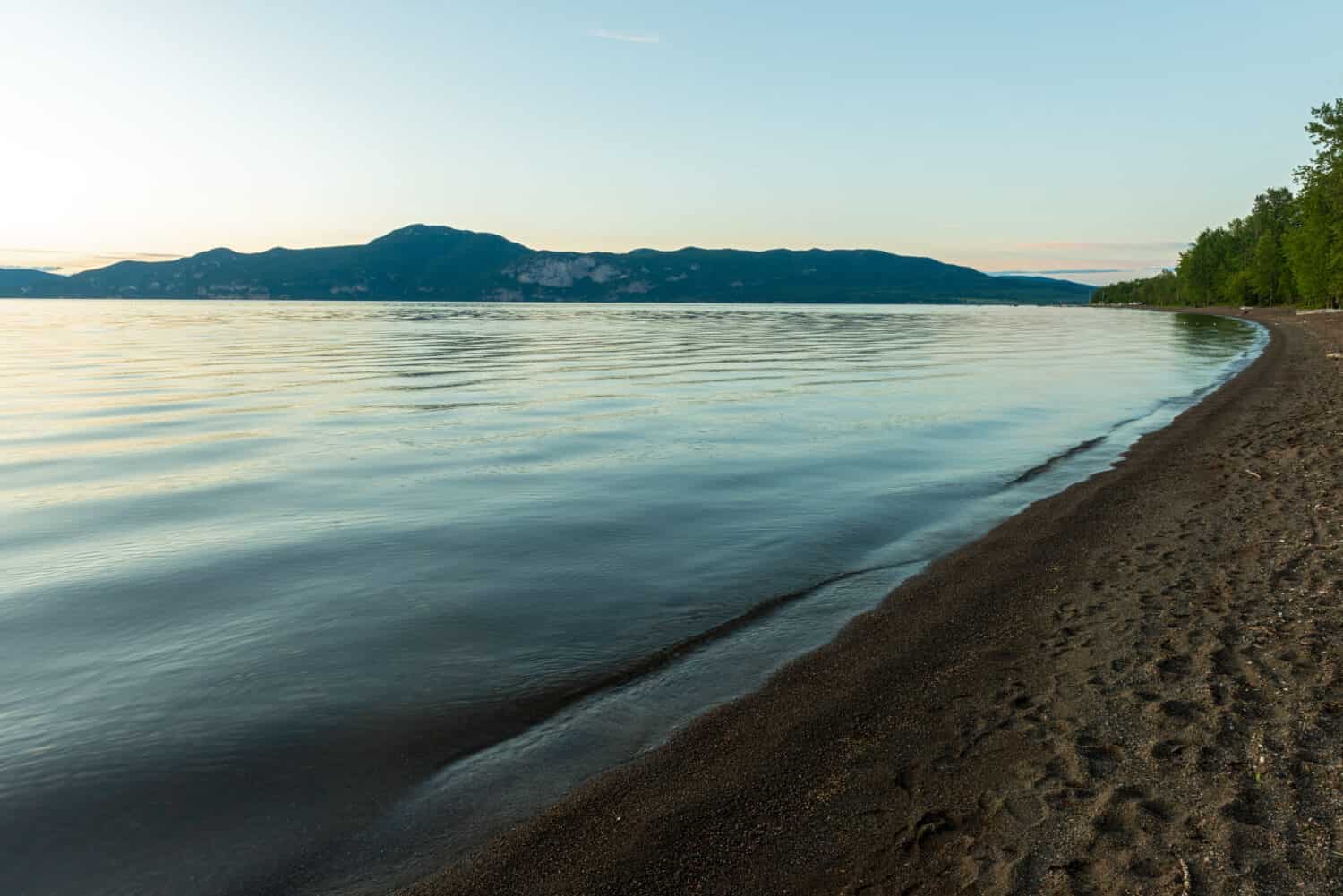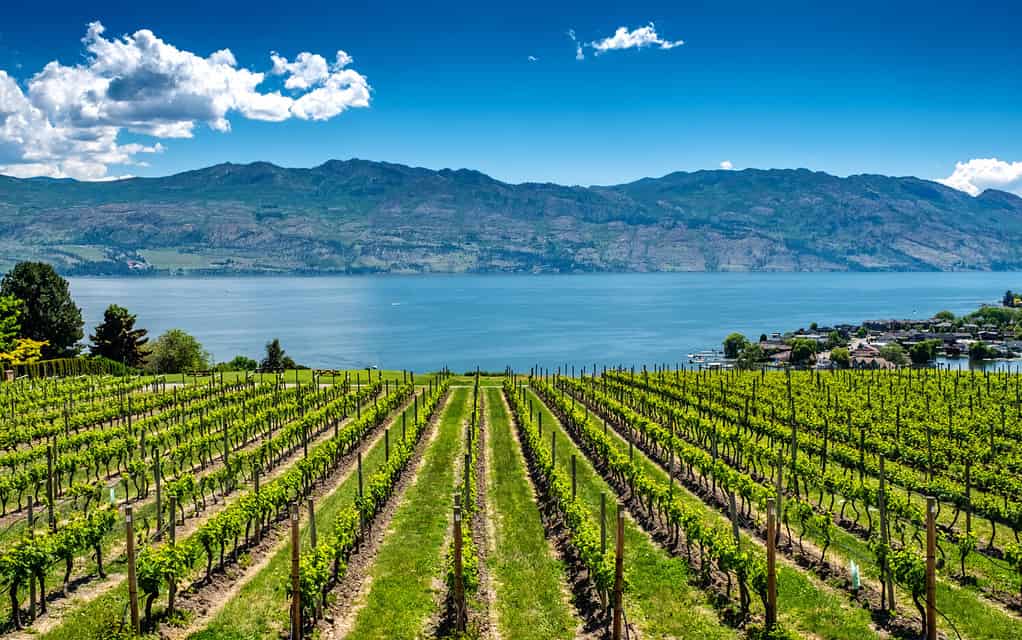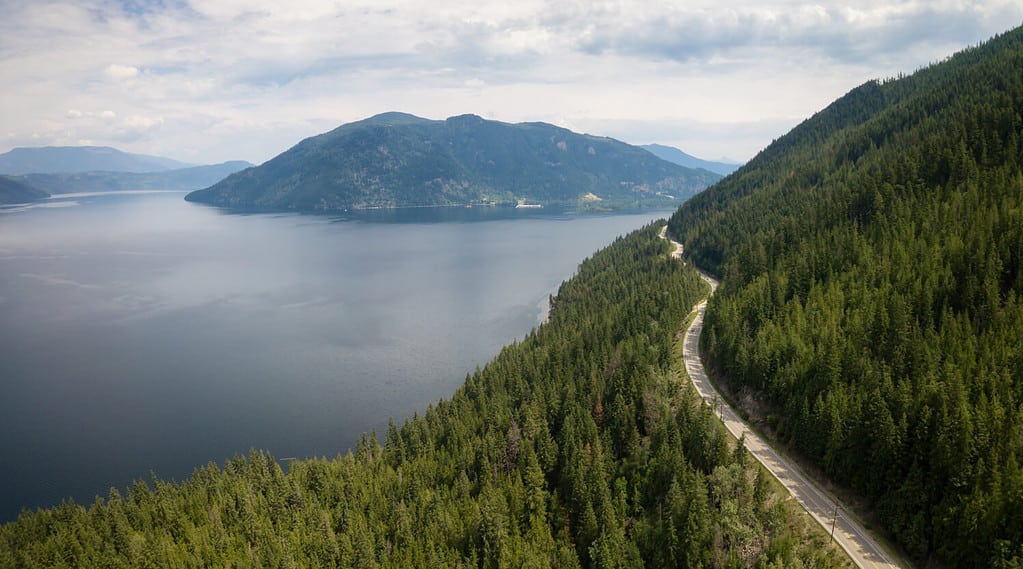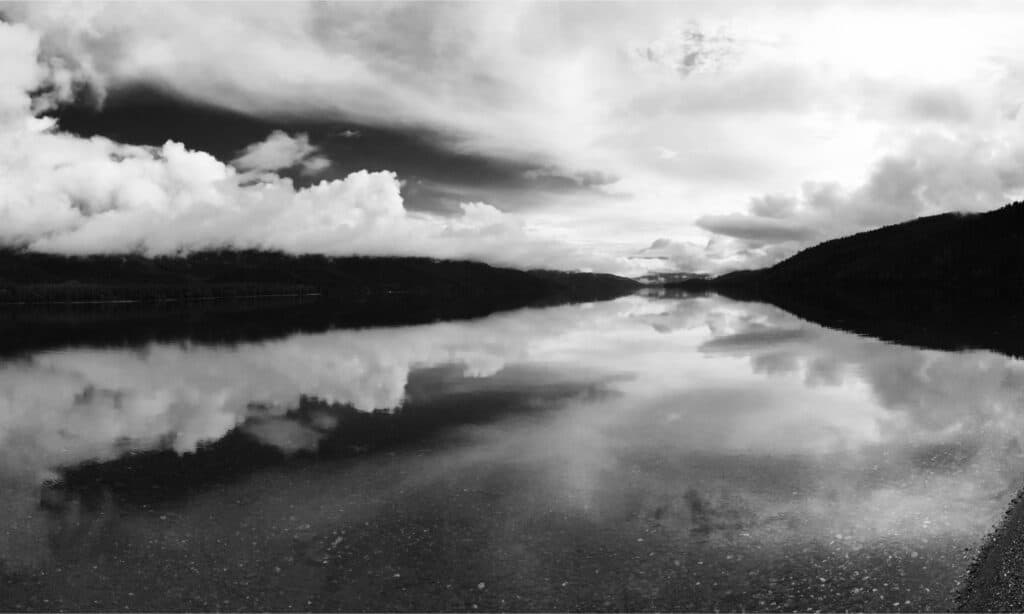British Columbia, Canada’s westernmost province, is a land of breathtaking contrasts. From the rugged Rockies to the lush rainforests of the coast, the region is a celebration of natural diversity. Yet, one feature that often gets overshadowed by these towering landscapes is British Columbia’s wealth of lakes. They are serene, expansive, and profoundly impactful on both the environment and human life. Here, we explore the 10 largest lakes by surface area that reflect the beauty of the province in more ways than one.
So Many Ways to Measure a Lake, Why Surface Area?
You may wonder why we’ve chosen to rank these lakes by surface area. There are definitely other metrics, like volume, depth, or shoreline length. The reason for surface area is twofold. First, surface area is an immediately perceptible feature. It dictates the lake’s visibility on the landscape and influences activities like boating, fishing, and tourism. Second, the surface area of a lake plays a critical role in its ecological dynamics. This includes the types of species it can support and its susceptibility to environmental pressures like climate change.
In this article, we launch you on a journey across the province, highlighting its 10 largest lakes by this all-important metric. These lakes are ecological powerhouses, recreational paradises, and in some cases, vital lifelines for communities.

Largest in the province by a long shot is Williston Lake.
©Pictureguy/Shutterstock.com
1. Williston Lake: British Columbia’s Man-Made Marvel of the North
Our journey starts at Williston Lake, the crowning jewel of British Columbia’s Northern Interior. Williston reigns supreme as the province’s largest lake by surface area. At approximately 1,761 km² (680 sq mi), it’s an expansive aquatic haven—both an engineering marvel and an ecological treasure.
Geography and Ecology
Part of the upper Peace River basin, Williston Lake is relatively remote, with no immediate nearby metropolitan areas. Yet, its relative remoteness doesn’t deter the adventurous at heart; the lake is a sought-after destination, offering captivating and untouched landscapes.
But what truly sets Williston Lake apart is its unique ecological character. Known as a dimictic and oligotrophic lake, it undergoes two annual mixing cycles—one in the spring and another in the fall. In layman’s terms, this means the lake has exceptional water quality, a result of its low nutrient levels. While this scarcity of nutrients limits the variety of species it can support, it’s a hallmark of many of British Columbia’s pristine lakes.
Human Influence and Activities
Contrary to its natural look, Williston Lake is a man-made lake. Created in 1968 by the construction of the W. A. C. Bennett Dam, the lake serves a dual purpose. It’s a recreational paradise for boating and fishing, and a powerhouse for hydroelectric generation. This confluence of human activity and engineering ingenuity underscores the intricate relationships between mankind, technology, and the environment.
Unique Features
What sets Williston Lake apart is not only its size, but also its ranking as the seventh-largest reservoir by volume in the world. This makes it an engineering feat of global significance, all while maintaining a serene beauty that appeals to those seeking solitude and recreational opportunities.
2. Nechako Reservoir: Progress and Loss in British Columbia
With a surface area of approximately 890 km² (343 mi²), the Nechako Reservoir comes in as British Columbia’s second-largest lake. Yet, its grandeur is tinged with complexity—a hydroelectric marvel that has reshaped both the land and lives of its local communities, particularly the Cheslatta Carrier Nation.
Geography and Ecology
Deep in the rugged landscapes of British Columbia, the Nechako Reservoir is a mix of both the untamed beauty of nature and the transformative power of human ingenuity. Flanked by Tweedsmuir North Provincial Park and Entiako Provincial Park, this remote reservoir is far from inaccessible. Thanks to thoroughfares like the Holy Cross forest service road and the Kenney Dam Road, one can get there. What makes the reservoir particularly interesting is its engineered westward water diversion to the Pacific Ocean. This is a departure from its natural eastward flow toward the Fraser River.
Yet, this marvel of engineering comes with ecological implications. Born from the flooding and merging of a series of smaller lakes, the Nechako Reservoir has dramatically reshaped the area’s ecological dynamics. This transformation extends beyond the physical landscape. It affects the very ecosystems and ways of life that once thrived in the native Nechako basin.
Human Influence and Activities
The genesis of the second-largest reservoir traces back to the construction of the Kenney Dam in 1952, which was erected to service an aluminum smelter at Kitimat. Though an engineering marvel, the project came at a human cost: over 75 families were relocated, and traditional hunting and fishing grounds of the Cheslatta Carrier Nation were submerged. Decades later, the proposed Kemano Completion Project aimed to expand power generation but was eventually shelved due to environmental worries.
Unique Features
Beyond its vast expanse, Nechako Reservoir is segmented into three distinct reaches: Peace Reach, Parsnip Reach, and Finlay Reach. Its maximum depth dives to 305 meters (1,001 feet). This makes it not just a surface spectacle but also a deep, intricate water body. It’s also one of the largest reservoirs in Canada, a status that underscores its role as a cornerstone in the province’s hydroelectric capabilities.

The province’s longest natural lake, Babine is co-governed with the the Lake Babine Nation.
©Ms. Scott/Shutterstock.com
3. Babine Lake: Natural Bounty and Cultural Richness
As British Columbia’s longest natural lake, stretching over 177 km (110 mi) in length, Babine Lake is a sight to behold. With a surface area of approximately 495 km² (191 mi²), it’s a lake of considerable ecological importance and cultural heritage. Further, it’s governed in part by Lake Babine Nation (LBN).
Geography and Ecology
Northeast of the town of Burns Lake in central British Columbia, Babine Lake is a gem within the Nechako Lakes group. Ecologically, Babine Lake plays a critical role within the region. The lake drains into the Babine River, a significant tributary to the Skeena River. It enriches the waterways with a range of fish species, including salmon, trout, and whitefish. This has made it a hotspot for fishing and water sports activities. Moreover, LBN actively collaborates with British Columbia’s agencies to ensure the sustainable management and promotion of wildlife populations within their territory.
Human Influence and Activities
One of the largest in the area, this ancient lake has been a vital part of human history, its shores having been inhabited for thousands of years by the Babine First Nation. Today, the lake and its surrounding areas offer a plethora of recreational opportunities, all set against the backdrop of a lake so large it includes several provincial parks like Babine Lake Marine Provincial Park, Pendleton Bay site, Smithers Landing site, Topley Landing Provincial Park, and Red Bluff Provincial Park.
Unique Features
Its expansive area also encompasses islands that cover 16 km² (6.2 sq mi), adding another layer of natural awesome to Babine Lake. Furthermore, it is home to several archeological sites.

Fancy a free ferry ride? Then you’re in luck: Kootenay Lake offers the world’s longest one!
©EB Adventure Photography/Shutterstock.com
4. Kootenay Lake: A Natural Oasis Surrounded by Majestic Mountains
Kootenay Lake can arguably be considered a region unto itself. It sits between the Selkirk and Purcell mountain ranges in southeastern British Columbia. With a surface area of approximately 407 km² (157 mi²), it ranks as one of the largest natural lakes in the province, serving both as an ecological treasure and a hub for outdoor enthusiasts.
Geography and Ecology
Kootenay Lake is set against a backdrop of breathtaking mountain vistas. At its heart, Kootenay Lake is an ecological paradise. The lake teems with an assortment of fish, making it an angler’s dream. It hosts a variety of fish species, including kokanee salmon, rainbow trout, and bull trout. Additionally, the skies above the lake are frequented by bald eagles and ospreys, making it a prime location for bird watching and photography.
Human Influence and Activities
Over the years, Kootenay Lake has morphed into a popular destination for a slew of recreational activities. Fishing, of course, draws many to its waters. But boating and swimming are also crowd-pleasers. Beyond recreation, the lake serves a functional role too, being used for hydroelectric power generation.
Unique Features
As if its size and ecological richness weren’t enough, Kootenay Lake offers something truly unique: the longest free ferry ride in the world. This free superlative is courtesy of the Kootenay Lake Ferry. Guess some of the best things in are free.

Stuart Lake is easily accessed via the nearby town of Fort St. James or Paarens Beach Provincial Park.
©davidrh/Shutterstock.com
5. Stuart Lake: Reservoir of Natural Beauty and Cultural Significance
In the Northern Interior of British Columbia lies Stuart Lake, or Nak’albun, as it’s known in the Carrier (Dakelh) language. This natural expanse of water is an emblem of the area’s ecological richness and a playground for outdoor enthusiasts. Stretching across 358 km² (138 mi²) with 270 kilometers (168 miles) of shoreline, it’s one of the province’s largest. As such, it has something for everyone.
Geography and Ecology
With the quaint town of Fort St. James gracing its outlet, Stuart Lake stretches across a width ranging from 6 to 10 km (approximately 3.7 to 6.2 miles). This expansive body of water serves as a striking centerpiece for the surrounding landscape. Additionally, it’s part of a more extensive boating system known as Stuart-Trembleur-Takla Lakes. This chain of lakes serves as a hotspot for sport fishing, offering a variety of fish species—rainbow and lake trout, burbot, kokanee, and mountain whitefish. Notably, these waters are also host to the longest migration route for chinook and sockeye salmon in the province.
Human Influence and Activities
Angling, wildlife viewing, boating, and hunting are just a few of the activities that you can indulge in. Stuart Lake Marine Park sustains these pursuits by encompassing three lakeside sites, which form part of the Stuart-Trembleur-Takla boating system.
Unique Features
What sets Stuart Lake apart is its sheer size, being one of the largest natural lakes in the province. Additionally, it’s highly accessible from numerous locations.

People know this valley for its wineries and fruit orchards, to which Okanagan Lake plays an essential role.
©John Fader/Shutterstock.com
6. Okanagan Lake: British Columbia’s Natural and Cultural Wonders
Okanagan Lake is a symbol of the breathtaking diversity of southern British Columbia. With a surface area of approximately 351 km² (136 mi²), the lake serves as a focal point of the Okanagan Valley. The valley is a regions where ecology, human pursuits, and even mythology coalesce.
Geography and Ecology
Within the fertile expanse of the Okanagan Valley, Okanagan Lake, being one of the largest bodies of freshwater, is the lifeblood for the valley’s fruit orchards and vineyards. In fact, Okanagan Lake is a living, breathing ecosystem. Beneath its surface dwell a variety of fish species including rainbow trout, kokanee salmon, and lake whitefish. But aquatic life is just part of the story. The lake’s surrounding areas are frequented by bald eagles and ospreys. Add the land mammals, such as bighorn sheep, and you’re looking at over 300 species of wildlife.
Human Influence and Activities
The lake is a hub of human activity and innovation. It’s popular for boating, fishing, and swimming. Okanagan Lake also has practical applications, as it plays a role in hydroelectric power generation and serves as a vital resource for irrigation in the valley’s agriculture-rich land.
Unique Features
While its ecological richness and utility are commendable, what truly sets Okanagan Lake apart is its cultural mystique. Legend has it that the lake is home to Ogopogo, a lake monster that has captured imaginations for generations. Canada’s own Nessie. But views on Ogopogo are shifting from the monstrous to the spiritual: Ogopogo as the lake’s incorporeal talisman.

The Trans-Canada Highway provides a nice view of Shuswap Lake.
©EB Adventure Photography/Shutterstock.com
7. Shuswap Lake: An Intricate Web of Nature and Human Activity
With a surface area of 310 km² (or just under 120 mi²), Shuswap Lake isn’t only one of the largest, but also one of the most intricate lake systems.
Geography and Ecology
Geographically dynamic, it’s an interconnected maze of arms and bays, making it a playground for navigational adventures. The lake serves as a habitat for a variety of fish species, including rainbow trout, kokanee salmon, and lake whitefish. Its biological richness extends above the water as well, with bald eagles and ospreys circling the skies. This biodiversity is a sign of a thriving ecosystem that plays a critical role in the region’s natural balance.
Human Influence and Activities
People enjoy recreational activities like fishing, boating, and swimming, at Shuswap Lake. It also plays a functional role in hydroelectric power generation.
Unique Features
One of Shuswap Lake’s standout features is its intricate layout of several arms and bays, each a world of its own. Additionally, provincial parks and beaches dot the lake, making it a vacation destination.

The world’s deepest fjord lake is right in British Columbia.
©Morseofphoto/Shutterstock.com
8. Quesnel Lake: Where Glacial Depths Meet British Columbia’s History
In the heart of central British Columbia, Quesnel Lake, with an expansive surface area of 266 km² (103 mi²) plunges deep into the earth as well as local history.
Geography and Ecology
Quesnel is a fjord lake. That is, it was formed in a valley carved out by glaciers. With its significant surface area, the lake stretches itself generously across the landscape, tempting visitors with the promise of new discoveries. Ecologically, Quesnel Lake serves as a treasure trove of biodiversity. From rainbow trout and kokanee salmon to lake whitefish, the underwater realm is brimming with life. Above the surface, bald eagles and ospreys patrol, contributing to a robust ecosystem that underscores the area’s biological richness.
Human Influence and Activities
In addition to its diverse wildlife, Quesnel Lake is a hub of human activity. It’s a popular playground for fishing, boating, and swimming, making it a quintessential destination for outdoor enthusiasts. Additionally, the lake is harnessed for hydroelectric power generation.
Unique Features
Among its many fascinating attributes, Quesnel Lake is deep, at a maximum depth of 530 meters, or 1,739 feet. This makes it the deepest fjord lake in the world and North America’s third deepest. The lake is also steeped in history, hosting several ghost towns and historic sites that stand as solemn witnesses to a time long gone but not forgotten.
9. Francois Lake: Where Nature Meets Cultural Heritage
Francois Lake, a jewel in British Columbia’s crown, marries natural beauty with cultural richness. Spanning an area of 257.5 km² (approximately 99.2 mi²), it holds the distinction of being the second-longest natural lake in the province. Beyond its impressive stats, Francois Lake offers an immersive experience, from recreational activities like fishing and hiking to the deep-rooted history of First Nations.
Geography and Ecology
Francois Lake Park covers the east end of the lake and thus offers 25 km (15.5 mi) of protected shoreline. coniferous forests. The lake itself is an angler’s dream, teeming with rainbow trout and char. Meanwhile, the surrounding coniferous forests serve as a high-quality winter habitat for moose. The area is also home to an array of mammals, birds, and other fish species, affirming its status as an ecological wonder.
Human Influence and Activities
The area bears the imprints of the First Nations people, specifically the Office of the Wet’suwet’en Hereditary Chiefs and the Carrier-Sekani Tribal Council. Traditionally, the lands around Francois Lake were hunting, fishing, and gathering grounds, a fact that still resonates in the area’s rich cultural heritage today.
Unique Features
Francois is second in length to only Babine Lake among British Columbia’s natural lakes.

Luxury and nature mesh seamlessly at Harrison Hot Springs.
©Edmund Lowe Photography/Shutterstock.com
10. Harrison Lake: A Wilderness Oasis with a Splash of Luxury
When it comes to blending untamed wilderness with modern amenities, few destinations match Harrison Lake. Found within the southern Coast Mountains of British Columbia, Harrison Lake spans roughly 250 km², or 96.5 mi².
Geography and Ecology
A glacier fed lake in mountain terrain, Harrison is a living, breathing ecosystem, supporting a diverse array of life. Anglers will find the waters rich with rainbow trout, kokanee salmon, and lake whitefish. Above, birdwatchers can spot bald eagles and ospreys. The lake’s ecology is a remarkable testament to the richness of Canada’s natural habitats, creating a haven for biodiversity.
Human Influence and Activities
Harrison Lake is harnessed for hydroelectric power. But its primarily known for its recreational possibilities. From boating and fishing to swimming, the lake has become a focal point for outdoor activities that allow visitors to engage with the natural world around them.
Unique Features
But what sets Harrison Lake apart from other lakes is its surprising juxtaposition of wilderness and luxury. While the lake itself is one of the largest in the southern Coast Mountains, surrounded by raw and untamed terrain, it also houses a range of hot springs and resorts. Imagine spending a day exploring the surrounding forests and then sinking into the comforting warmth of a natural hot spring—it’s this blend of experiences that makes Harrison Lake a unique destination.
Conclusion
British Columbia’s lakes are ecological keystones, cultural landmarks, and recreational hubs. Immense in size and diversity, they form a vital network across the province. Beyond supporting biodiversity and powering the region, they enrich human life, from ancestral traditions to modern adventures. If the mountains and glaciers form the broad shoulders of the province, then these lakes are the lifeblood of British Columbia, integral to its health, history, and happiness.
The photo featured at the top of this post is © Edmund Lowe Photography/Shutterstock.com
Thank you for reading! Have some feedback for us? Contact the AZ Animals editorial team.







